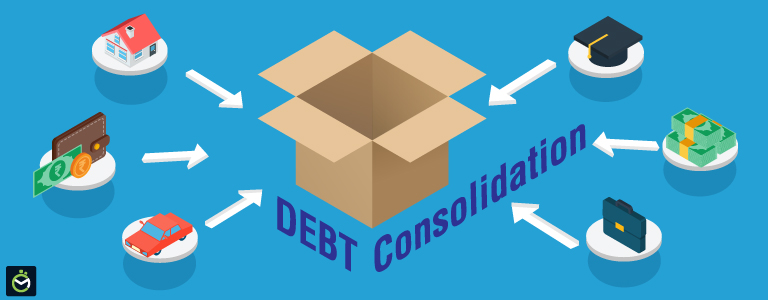Today many citizens pay off several credit debts at the same time. Some people take new loans because they are used to always having money at hand or facing some serious circumstances. The reasons may be different, but the financial burden, in any case, will be significant. In addition, having two or three loans at once, borrowers often simply get trapped in their debts. For example, the best-licensed money lender in Singapore will help you in choosing the right loan for yourself. At the moment, the credit market provides the services of lessening the burden of loans, which is called "debt consolidation loan".
Debt consolidation is a financial service that combines multiple loans into a single loan. Debt consolidation is often used when problems arise at the stage of loan repayment. The considered procedure allows reducing the financial burden on the borrower by revising the initial terms of the agreement and introducing various additional options.
Well, let’s have a look at the following guide on debt consolidation loans.
Table of Content
- What is Debt Consolidation Loan?
- Types of Loan Consolidation
- Collateral
- Unsecured
- How Are Loans Consolidates?
- How Does Debt Consolidation Work?
- Consolidation Benefits
- Conclusion
What is Debt Consolidation Loan?
In the modern credit market, banking institutions are guided by the provision of various services to clients to reduce the level of the financial burden. Such actions during debt repayment play a decisive role associated with the ability to protect against unexpected costs and deterioration of reputation. Debt consolidation is a strategy to combine multiple loans into a single loan. The ultimate goal of using consolidation is to reduce the burden on the payer. It allows you to make payment of credit debt more convenient. They usually consolidate cash loans in cases where they want to simplify the repayment process or change the terms of lending for the better.

Types of Loan Consolidation
You can consolidate debts that have formed as a result of the use of credit cards, consumer loans, or microloans. As a rule, a person of no more than five existing obligations is allowed. The parties agree on the terms of the new deal individually without involving the original creditors.
- Collateral
It implies the availability of collateral. The borrower must provide liquid property as collateral in order to consolidate the debt. The loan is issued at a low-interest rate. After the imposition of an encumbrance on tangible assets, there is a risk of loss of the pledged property in the event of default on loan obligations.
- Unsecured
It is provided without collateral and resembles a consumer loan for any need. Consideration of the application takes more time since the client needs to confirm his solvency. Under the updated lending program, the interest rate increases. And, the amount disbursed does not exceed the total amount of the combined loans.
- How Are Loans Consolidates?
Debt consolidation is not always present in the list of services provided by financial institutions. This method of revising credit conditions is widespread in Western countries, where intermediary companies are engaged in debt consolidation. Domestic banks usually use loan consolidation as part of the refinancing procedure. This method of debt management allows you to revise the payment terms of multiple loans, simultaneously combining them into one loan with an updated repayment schedule. Merging loans is available to adult clients with an impeccable reputation and stable income. The bank has the right to demand identity documents, confirming income and proof of the borrower’s employment.
How Does Debt Consolidation Work?
To consolidate debt, you need to apply for a new loan and use the proceeds from that loan to pay off existing debts. Before applying for a consolidation loan, you have to make a thorough analysis of the debt structure. Some loans will be more beneficial to repay in current conditions than to combine them into one commitment. It is worth noting that you can combine different types of loans like cash, auto, installment plan, housing, overdraft, and credit card limits.
After analyzing the financial situation, you can start applying for a consolidation loan from the bank. Before providing it, the institution will check the creditworthiness by checking the amount and frequency income, the type of employment, and account statements.
Features of Consolidation:
- You can combine several loans of different types.
- The terms of the merger of debts are always negotiated individually.
- Consolidation usually results in an unsecured consumer loan for up to five years.
- Interest rates and commissions are often revised in the debt consolidation process.
- Borrowers have the right to connect new options or refuse to receive additional services.
Citizens who rely on additional financial support from banks and non-banking institutions to make various purchases of movable or immovable property should consider the risks associated with decreased insolvency. A competently issued loan will allow you to pay off different types of expenses. But on its part, the borrower is obliged to compensate for the costs of the service organization.
Comments
Post a Comment